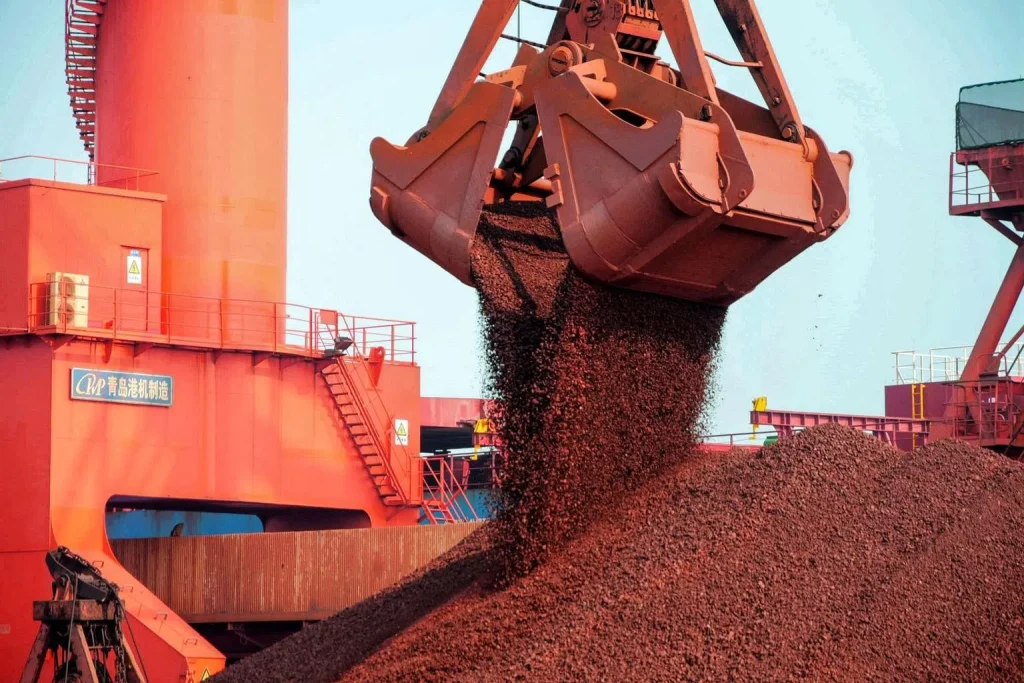[SINGAPORE] Global iron ore trade is facing a pivotal shift as Simandou, a massive iron ore mine in Guinea being developed by a Singapore conglomerate, is about to ramp up supply of the ferrous mineral.
Estimated at 2.4 billion tonnes of high-grade iron ore as one of the world’s richest untapped deposits, and projected to start production by end-2025, Simandou is a strategic project for China as it aims to diversify its suppliers from Australia and Brazil – the two countries together accounting for about 80 per cent of seaborne iron ore exports.
As a long-anticipated supply disruptor, the project is closely monitored by the iron ore industry, which is also betting on India to absorb demand lost in China, based on panel discussions during Singapore International Ferrous Week.
Two blocks of the mining concession are being developed by Winning Consortium Simandou (WCS), a joint venture led by Singapore-based mine-to-shipping conglomerate Winning International Group. This is in partnership with China Shandong Weiqiao Group and state-owned China Baowu Steel Group.
The remaining two blocks are under a Simfer joint venture, led by British-Australian mining giant Rio Tinto, in partnership with China’s Chalco Iron Ore, and the Guinea government.
At full capacity, the mine is projected to produce up to 120 million tonnes of high-grade iron ore (about 65 per cent iron content) annually.
A NEWSLETTER FOR YOU

Friday, 8.30 am
Asean Business
Business insights centering on South-east Asia’s fast-growing economies.
Trade implications
Cheong Jin Yu, head of Baltic Exchange Asia, told The Business Times that Baltic Exchange is keeping an eye on the development of Simandou as a key force to change trade routes of iron ore.
“What I would imagine would happen is that, if and when Simandou becomes a consistent supplier into the iron ore market, the (Baltic Exchange’s) advisory council will tell us it’s time to start pricing a route out of. So it will be a West Africa-to-China route,” he said.
He added that once an index is established, the exchange would then develop different tools such as futures for the new index for market players to manage freight volatilities.
The impact of Simandou’s supply on key iron ore routes such as China-Australia hinges on actual cargo flows, Cheong said, with markets awaiting clarity.
Vamsi Goutam, chief commercial officer of Tata Steel Minerals Canada, said during a panel that Simandou’s supply could push up volumes and potentially freight rates in the Atlantic trades.
He expects “freight balancing” as shipping capacity might not pick up at the same rate as the steep increase in dry bulk volume.
De-risking for iron ore producers
The expected influx of high-grade iron ore from Simandou might worsen an oversupply situation as China’s demand growth softens, which would put more pressure on iron ore producers.

“A lot of producers who are high on the cost curves will come under pressure,” said Claire Chong, senior analyst of Thurlestone Shipping, noting that their operational resilience will come into play.
Francois Lavoie, senior vice-president of sales of technical market and product development at Champion Iron, said that as Simandou is “mixing things up”, small producers such as Champion Iron are trying to diversify offerings as part of their de-risk strategy.
This includes converting production into iron ore of even higher grades and lower impurities, he noted.
India’s rising appetite
Baltic Exchange’s Cheong noted that the industry is also monitoring how iron ore imports to India would evolve, as the second-largest steel producer in the world ramps up its production.
Paul Bartholomew, lead analyst of S&P Global Commodity Insights, noted that India is expected to emerge as a major iron ore importer, with the import forecast in 2026 to more than double from 2024’s imports.
However, Thurlestone Shipping’s Chong noted that despite a rising projection, India’s iron ore imports are still “too small to compare with China’s”.
While India’s iron ore import is expected to hit more than 130 million tonnes, China’s iron ore imports are projected to stay above 1.1 billion tonnes to 2035, S&P Global indicated.



